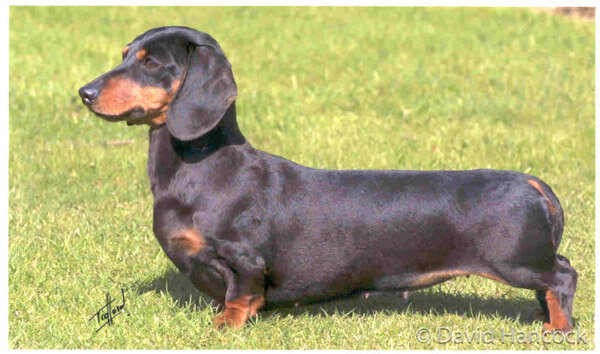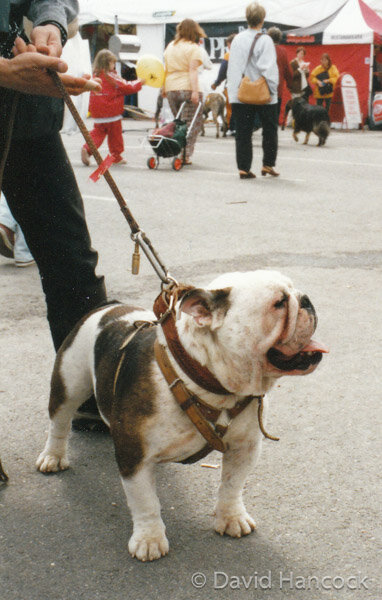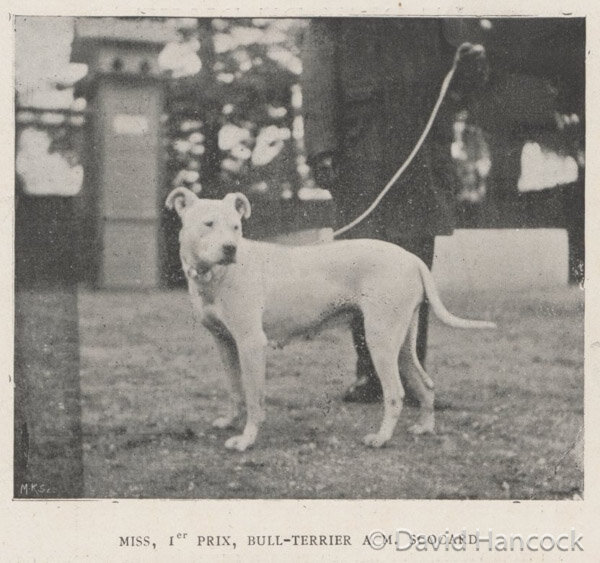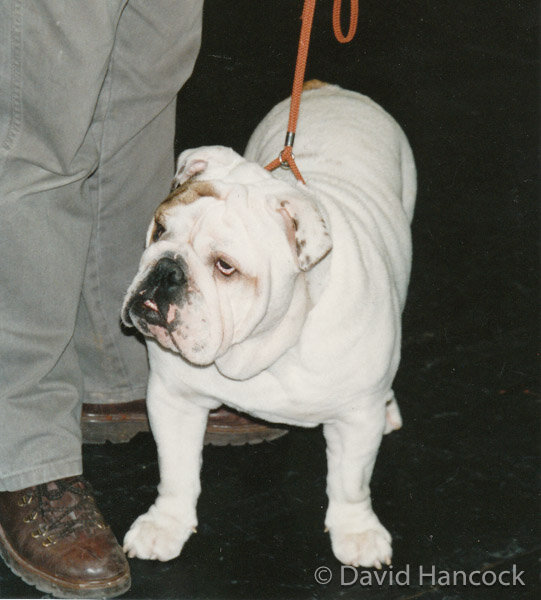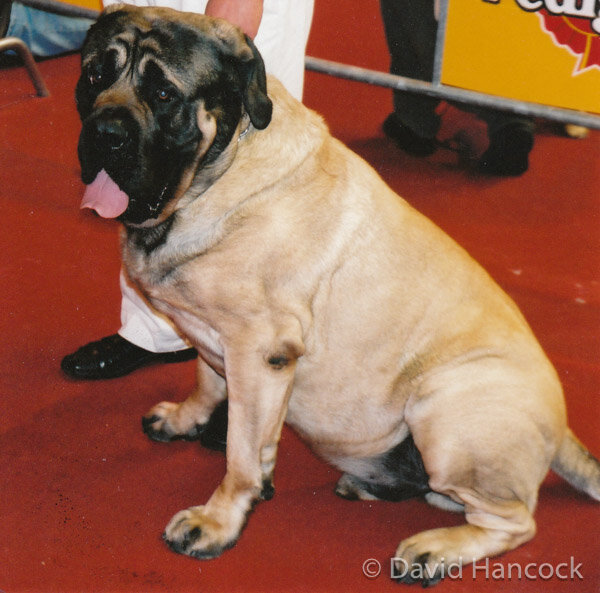1139
THE TRUE SHAPE OF BREEDS
By David Hancock
In her excellent book, Unnatural Selection, published in 2018 by Princeton, Katrina van Grouw, makes some telling points about breeding animals for a misconceived concept of beauty ahead of their physical soundness. She points out that a dog, canary, sheep or pig can be made to acquire extraordinary, exaggerated characteristics – massive increases in body mass, complete changes of plumage colour, feathered feet, naked skin or ridiculously short legs – in the course of a few carefully manipulated generations. She explains how many mutations wrought in pets, based on what seems a breeder’s bizarre aesthetic whim, have incurred charges of cruelty and have inflicted pain on their animal subjects. Crucially, she points out that dog breeders not only do not talk to biologists but are outrightly suspicious and even hostile towards them. In her own approaches to dog breeders she often received downright hostility. In such a situation, dogs suffer; biologists and breeders need each other! Dogs need both to work together but are usually the victims not the beneficiaries of acquired knowledge; breeding dogs without sufficient knowledge to do so is not the most intelligent human activity.
At a time when breed health, breed purity and instructions to show ring judges are all receiving much merited attention, there is one extremely important aspect of pedigree dog breeding and showing that still needs emphasizing. It would be sad if we lost breeds to perpetual and prolonged inbreeding, more than regrettable if we lost breeds to rogue genes and monstrous if judges rewarded exhibits displaying harmful exaggerations. But sad, regrettable and monstrous too if our precious breeds are bred to the wrong template; the show ring has changed far too many breeds - and not for the better; fashion, fad and pressure from influential kennels can impose a changed type on a breed. Gradual changes, viewed initially as slight exaggerations, develop into bigger ones, reactions to docking in breeds not previously docked and ‘the fashion of the day’ can all contribute to the classic fundamental type in a distinctive breed being reshaped. This reshaping can be whimsical in origin, untraditional in effect, even harmful in its manifestation, but as time passes, can become acceptable. Time to send for breed architects, experts on safe structures, canine morphologists.
The shape of a breed, its physical form or morphology, should result from its functional design, be protected by its breed standard, guarded by its breed clubs and treasured across the generations of breed devotees as its unique identity. But all too often breed points become breed exaggerations as close breeding overplays its hand. In this way, long ears become ground-draggers, short legs become castors, long spines become centipedal, long coats become overcoats, slack eyelids become dustpans and short muzzles become dental and respiratory handicaps. It is easy to argue that the Kennel Club should be overseeing breed-continuation or protecting the morphological integrity of a breed, if only on health grounds. But the first stop is surely the breed clubs; the KC should look over their shoulders and may have failed to do so. But that shouldn’t let breed clubs off the hook. Who allowed the Bull Terrier to acquire an egg-shaped head? How did the Bulldog achieve a muzzle-less head? What permitted the GSD to lose its top-line and rear assembly? Who allowed the Mastiff to become valued solely for its bulk? Where were the breed architects?
Who decides what form the full-length tail of the Dobermann should take? Should it curl over the back or tuck in between the dog’s hind-legs? Who advises on the jaw-length of a healthier Bulldog? How high off the ground should the Basset Hound’s torso be? What is unacceptably long in the length of a Dachshund’s spine? Who will prevent the Bull Terrier’s skull from gradually becoming a complete sphere? Who decides the weight of a Mastiff, a breed council, or, one day, an animal rights group! There is a clear need for a canine morphologist, a decider of true shape, a verifier of safe structures in dogs. But who would he or she be, how would he or she operate and with whose authority? No one person could have all the skills involved, it would need a combination of canine historian, veterinary anatomist and functional advisor to work on the true shape of each subject breed for the betterment of that breed. More interference in breed business? Greater outside intrusion in breed matters? Even more bureaucracy for breeders and breeds? Truly there are greater dangers in not having such a person; untraditional and harmful alterations have already been made to our precious breeds.
The physical form or morphology of each breed of pedigree breed really needs safeguarding, it can preserve true type, it can restore functional type, it can achieve a healthier breed. A morphologist could make the word-picture of each breed ‘come alive’; words should never be Alice-in-Wonderland fodder, where they can mean anything we want them to mean. Photography too has given us a simply marvellous tool in the conservation of true type in dogs. Of course, each breed changes subtly as the years go by, but truly who wants a breed to change its appearance fundamentally ~ only those not skilful enough to breed to the standard or more wallet-led than honest. Historic photographs can show you what you don’t want in a breed. If you look at photographs of winning Bull Terriers of the 1920s like Ch. Galalaw Benefactor, the Cylva champions and the Wildfire dogs they depict very clearly the unexaggerated, once-classic Bull Terrier head before the ensuing fanciers decided to change the breed to their design, not that of Hinks, the breed creator. It needs a morphologist to point out to today’s Bull Terrier breeders that, in a few years’ time, the increasingly-rounded skull will have no room for teeth or protection for eyes. Similarly, the flat-faced Bulldog is an imposition not the beau ideal which Rosa and Crib, once the prototypal models, used to illustrate for us.
Every morally-driven conscientious kennel club should be considering such an aspect, if only to identify the difference between breed points as claimed by some exaggerators and breed alterations to suit show ring preferences which handicap the dog. Those who misuse the popular press to shout ‘hands off our traditional Bulldog’ need to remind themselves that honesty is always the best policy; they know from the writings of past breed experts like Farman that the more athletic longer-jawed specimen is the correct one historically. An informed morphologist would soon spot a Basset which was no longer a hound and a Clumber which was no longer a sporting spaniel. A Mastiff weighing 20 stones is no longer a heavy hound, just a warm-blooded obstacle. A Dachshund with its keel on the ground is no longer an earthdog, just an animated draught-excluder. These are ancient breeds, quite admirable breeds deserving of both our compassion and our best endeavours, not grumpy opposition based on contemporary lazy thinking. Kennel Clubs and the world of the pedigree dog would be better off with the appointment of morphologists than any number of smooth-talking silky-voiced front-of-house PR representatives.
In her valuable book on morphology, Katrina van Grouw includes some valuable line drawings of skeletal profiles; the one of the sighthound at full stretch reveals all too clearly the significance of form relating to function. What is truly the point of breeding a dog that is simply unable to carry out its intended role. A scenthound built like a sighthound might get to its quarry quicker but how does it locate the quarry without a combination of scenting power and stamina? As our political masters have learned the hard way, we are all judged in the end by what we do, not what we talk about. I would salute the first kennel club in the world to appoint an in-house, historically-informed, appropriately-qualified, but also known-to-be-honourable, canine morphologist! The true shape of each canine breed is so important that the matter just cannot be left to breeders alone.





